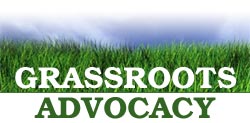By FALPC Intern, Kristina Kalolo
The Massachusetts’s YMCA and their partners are offering fabulous and free Advocacy Trainings for grassroots organizers. This event is a wonderful opportunity to think and practice ways to most effectively persuade decision-makers. Run by Diane Pickles and Lori Fresina, the Worcester training engaged with the following areas:
Increase knowledge and skills among new grassroots advocates
The training emphasized “our number one job as advocates is to make it easy for decision makes to give us what we want.” To do this they suggested:
- Know as much as possible about the decision-maker before communicating with them: For example, what is the geographic scope they represent? What issues are they passionate about? What is the most important issue the decision-maker faces in their position?
- Be prepared with multiple vehicles to persuasively communicate: have strong evidence that defines the problem and defends your solution, consider the value of an email vs. telephone call vs. in-person visit
- Build relationships: Invest time to know the decision-maker, check in frequently with their staff, offer yourself as a resource
- Share real stories and real impacts: There is nothing more powerful than an emotional and personal story, particularly if they are about how the decision-maker’s constituents or community will be effected
- Make the decision-maker look good: Create hero opportunities that can better bond you, your organization, and your issue to the decision-maker in ways that benefits you both
Develop compelling and personalized advocacy messages
They help you learn to write your “elevator speech” using the 27-9-3 Rule. It requires that you make your persuasive and attention-grabbing point in no more than 27 words, 9 seconds, and 3 points. To help focus your message, they encourage you to consider these questions:
- Who is the audience for this particular message?

- What might appeal to their direct self-interest?
- What do you want your audience to think or understand about your issue?
- How do you want them to feel about what you have said?
- What do you want your listener to do after they hear your message?
While I have done “elevator speeches” before, I found this model particularly helpful because of how much intention and direction is placed within this one brief message. These are meant to be spoken and intrigue the listener into asking more questions and taking an interest in your cause.
Build relationships among advocacy organizations
The training emphasized how critical collaboration and support are to grassroots advocacy campaigns. Reaching out to organizations performing similar work can greatly strengthen your numbers and your cause. How could your organization take action (independently and collaboratively) on these advocacy strategies?
- Hand-written letter
- Telephone call
- In-person visit (one-on-one, group, panel)
- Social media
- Letters to the Editor
- Advocacy event or community meetings
- Rally other to communicate (co-workers, volunteers, Board members, ect.)
Provide an overview of key legislative priorities
Be sure to keep an eye out for these bills:
Modernizing Tobacco Control and Protecting the Health of Minors
Active Streets and Healthy Communities

To learn more about these advocacy trainings and register for one by you click here.
– Lawrence, MA – Thursday, April 10, 9:00am-12:noon
– Amherst, MA – Tuesday, April 15, 11am-2pm (includes lunch!)



